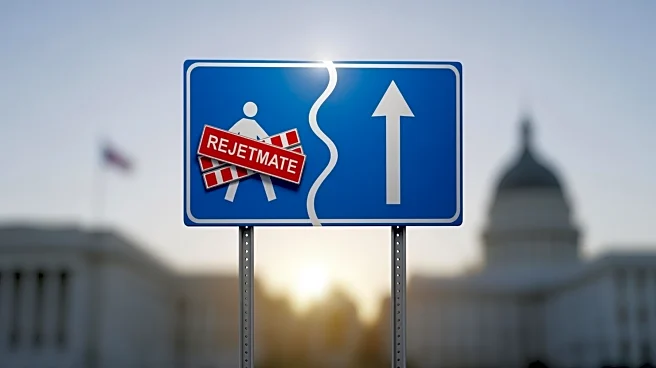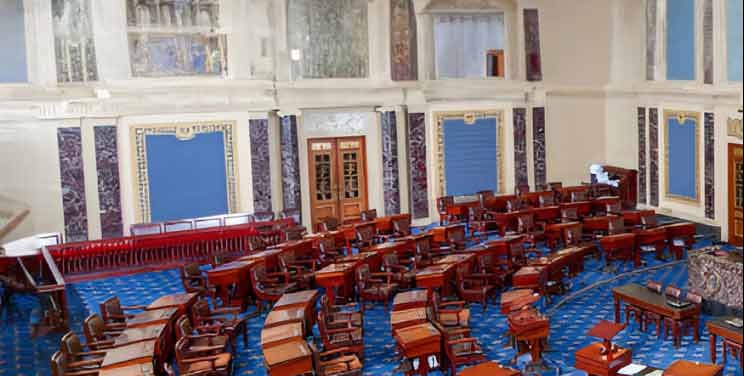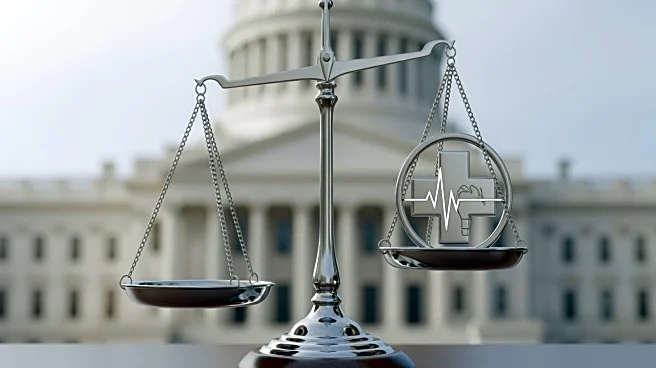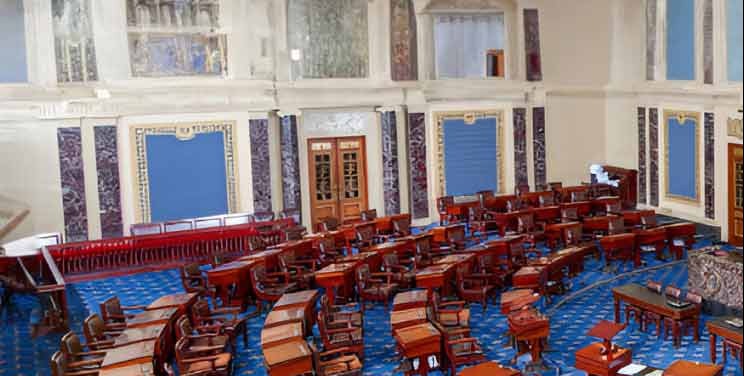What's Happening?
Senate Democrats have introduced a proposal aimed at reopening the federal government, which remains shut down. The plan, presented by Senate Minority Leader Chuck Schumer, includes a one-year extension
of expiring Affordable Care Act subsidies and a package of funding measures. This proposal seeks to secure votes by offering a 'clean' continuing resolution to maintain current spending levels and fund certain departments for the full fiscal year. The health care funding extension is designed to prevent a significant increase in insurance costs for millions of Americans on Obamacare. Additionally, Democrats have suggested forming a bipartisan committee to negotiate a long-term solution. However, Senate Majority Leader John Thune has dismissed the proposal as a 'nonstarter,' emphasizing the need to open the government before negotiating health care issues.
Why It's Important?
The ongoing government shutdown has significant implications for various sectors, including public services and the economy. The Democratic proposal highlights the urgency to address health care affordability, a critical issue for many Americans. If accepted, the plan could stabilize insurance costs and provide a temporary solution to the shutdown. However, the rejection by Senate Republicans underscores the political divide, potentially prolonging the shutdown and its associated impacts. The situation affects government employees, contractors, and citizens relying on federal services, creating pressure on lawmakers to find a resolution.
What's Next?
The proposal's rejection by Senate Republicans suggests that negotiations will continue, with both parties needing to find common ground to reopen the government. The focus may shift to alternative solutions or compromises that address both the shutdown and health care concerns. Stakeholders, including political leaders and public interest groups, are likely to intensify their efforts to influence the outcome. The ongoing discussions will be crucial in determining the government's operational status and the future of health care policy.













